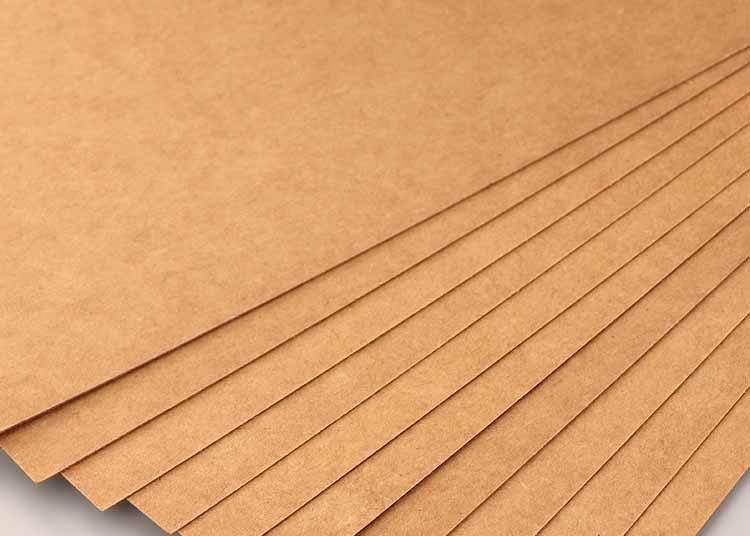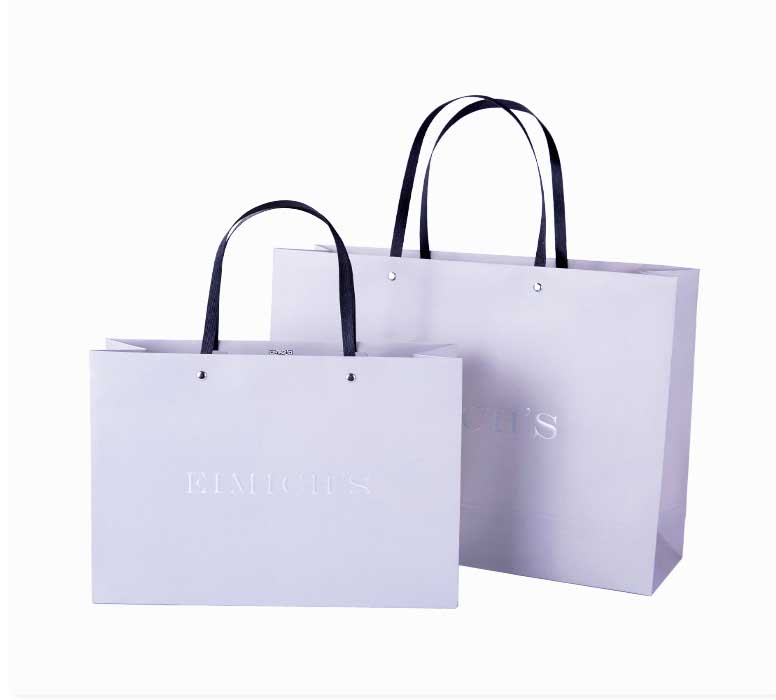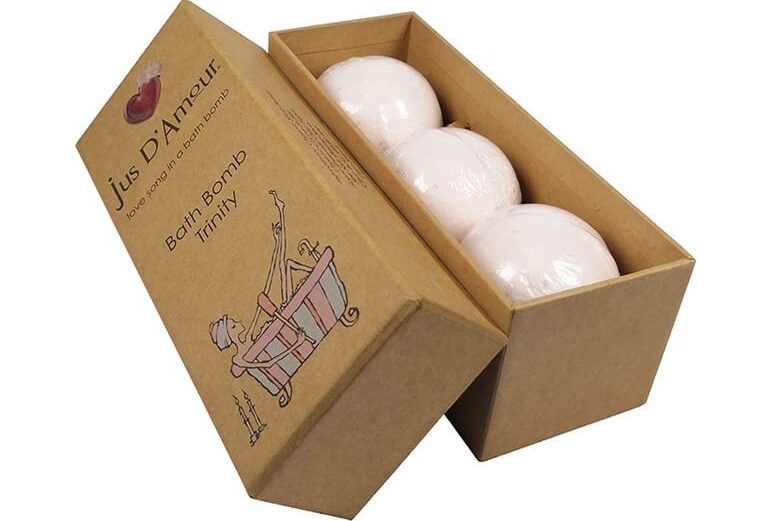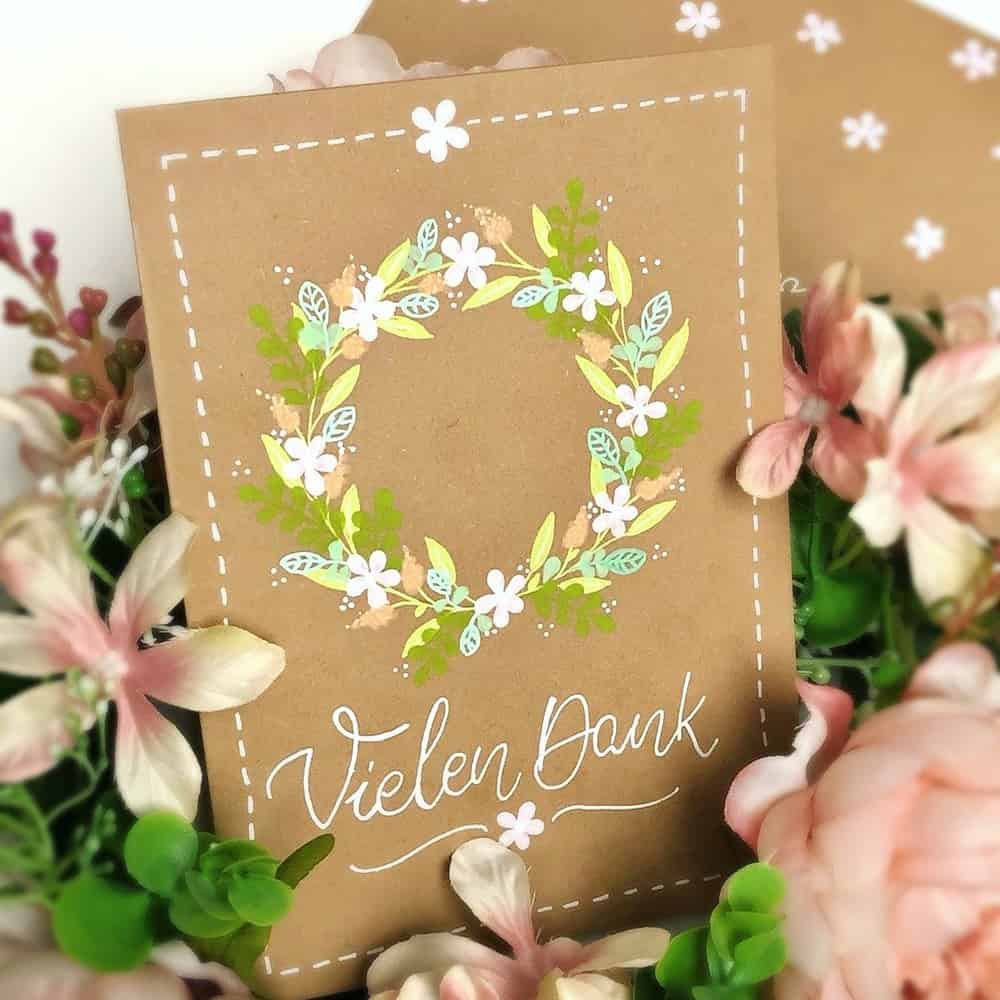Kraft paper has become a go-to solution for brands aiming to balance durability, sustainability, and cost-effectiveness in their packaging. Known for its distinctive brown hue and rugged texture, kraft paper is produced via a specialized pulping process that yields exceptionally strong, tear-resistant fibers. In today’s market—where consumer preferences increasingly lean towards eco-friendly materials—kraft paper offers both a rustic aesthetic and robust functionality. Recent industry reports project the global kraft paper market to grow from $17.06 billion in 2023 to $21.29 billion by 2028, reflecting rising demand across various sectors including food, e-commerce, and retail.
In this comprehensive guide, we’ll explore how kraft paper is produced, examine the different types of kraft paper available, discuss its key properties and benefits, and look at how businesses can leverage it in diverse packaging formats. We’ll also delve into sustainability considerations, cost factors, emerging trends, and practical tips for choosing the right kraft paper solution. By the end, you’ll have a thorough understanding of why kraft paper is a mainstay in modern custom packaging.
The Production Process of Kraft Paper
The word “kraft” comes from the German term for “strength,” which accurately reflects the resilient nature of kraft paper. Its production process is known for enhancing the durability and thickness of the final material, making it ideal for a range of packaging applications.

Kraft paper’s notable strength begins with a unique method of pulping wood chips (often pine or spruce). These chips are treated with a chemical solution that loosens and separates the wood fibers. Once the fibers are sufficiently broken down, they are rinsed to remove residual chemicals. Depending on the desired finish—like a lighter, bleached appearance—some batches may undergo an extra whitening step. Finally, the pulp is pressed into thin sheets and dried. Manufacturers can then add coatings or laminates if extra moisture or grease resistance is needed.
This streamlined process helps explain why kraft paper stands out in durability, as it retains a higher portion of the wood’s original fiber strength compared to many other papermaking methods.
Types of Kraft Paper
Kraft paper comes in a variety of forms, each suited to specific needs and branding goals. Understanding these distinctions will help you select the optimal material for your custom packaging project.
1. Natural (Unbleached) Kraft
- Appearance: Retains the classic brown color that many associate with kraft packaging.
- Fiber Strength: High tear resistance; excels in durability.
- Typical Uses: E-commerce mailers, grocery bags, shipping envelopes, and wrapping paper.
2. Bleached Kraft
- Appearance: Light or white shade, providing a cleaner, more refined look.
- Fiber Strength: Slightly lower than unbleached due to the bleaching process, but still robust.
- Typical Uses: When branding requires a lighter color palette, such as upscale product wraps or premium shopping bags.

3. Specialty Coated or Laminated Kraft
- Properties: Treated with coatings to improve moisture resistance or grease-repellency.
- Applications: Ideal for food items, deli wraps, or packaging that must withstand humid conditions.
- Customization: Can include additional printing or lamination layers for brand identity and high-impact visuals.
4. Recycled Kraft
- Eco-Focus: Produced partly or entirely from post-consumer waste, reinforcing a brand’s sustainability profile.
- Appearance: Similar to natural kraft but sometimes with subtle variations in texture or color.
- Best For: Companies aiming for a “green” image, e.g., organic products, artisanal crafts.
5. Colored Kraft Paper
- Range of Colors: Extends beyond brown or white; black kraft paper is especially popular for modern, minimalist packaging. Other colors include red, blue, and even pastels.
- Branding Potential: Offers a unique way to stand out on the shelf or online, while retaining kraft’s hallmark durability.
- Applications: High-end gift boxes, promotional event packaging, and fashion industry mailers where an on-brand color theme is essential.
Properties and Benefits of Kraft Paper
Kraft paper’s widespread appeal stems from a combination of mechanical strength, versatile aesthetic, and eco-friendly attributes.
1. Mechanical Strength
– High Tensile and Tear Resistance: Supports heavier products, reduces risk of tearing or puncturing during shipping.
– Durability Under Stress: Withstands shifting loads, making it a reliable choice for e-commerce shipping or industrial packaging.
2. Eco-Friendliness
– Recyclable and Biodegradable: Breaks down more easily in landfills compared to plastic alternatives.
– Renewable Resources: Wood pulp, if managed responsibly, is a sustainable raw material.
– Lower Environmental Footprint: Chemical recovery in the kraft process results in fewer emissions and pollutants.
3. Cost-Effectiveness
– Lower Per-Unit Costs: Often cheaper than certain specialty papers or synthetic materials.
– Reduced Shipping Costs: Lightweight nature can lower transportation fees, particularly at scale.
4. Rustic and Natural Aesthetic
– Brand Positioning: Conveys an organic, eco-conscious image that resonates with modern consumer values.
– Customizable Surface: Works well with a variety of printing methods, such as flexographic or digital printing, enabling logos and designs to pop against the earthy backdrop.
Kraft Paper vs. Other Packaging Materials
When evaluating kraft paper as a packaging material, it is essential to compare it with other common materials, such as plastic and cardboard. Each material has its unique properties, advantages, and disadvantages that make them suitable for various applications. Below is a comparative analysis of kraft paper against plastic and cardboard packaging.
| Feature | Kraft Paper | Plastic | Cardboard |
|---|---|---|---|
| Eco-friendliness | Biodegradable and recyclable | Non-biodegradable | Recyclable (depends on type) |
| Durability | High strength, tear-resistant | Varies; can be very strong | Moderate; less rigid than kraft |
| Water Resistance | Low (requires treatment) | High (waterproof) | Moderate (varies by type) |
| Customization Options | Limited color options | High (variety of colors/designs) | High (easy to print and design) |
| Cost | Generally low-cost | Can be cheaper for bulk | Cost-effective for mass production |
| Weight | Heavier than plastic | Lightweight | Moderate weight |
| Storage Space | Bulkier than plastic | Compact | Takes up moderate space |
| Aesthetic Appeal | Natural, rustic look | Less appealing; often clear or colored | Versatile designs available |
Applications of Kraft Paper in Custom Packaging
Kraft paper’s inherent strength, eco-friendly reputation, and versatile appearance have contributed to its adoption in a wide range of packaging applications. Below is an overview of common uses that highlight how businesses can incorporate kraft paper into their custom packaging strategies.
Food & Beverage
Kraft paper’s durability and availability in coated or laminated versions make it ideal for food packaging. Dry goods such as flour or grains can be packaged in uncoated kraft. Bakery wraps, deli papers, and coffee bags often use coated kraft for grease and moisture resistance. This ensures products remain fresh and secure while reinforcing a natural, wholesome brand image.
Cosmetics & Beauty
In the cosmetics and beauty sector, the simple yet elegant look of kraft paper aligns well with brands that prioritize eco-friendliness and authenticity. Kraft paper can be used for wrapping soaps, lotions, or bath bombs, and bleached kraft with color printing is an option for higher-end skincare or makeup lines aiming for a minimal but polished visual presentation.

Electronics
Although it might seem counterintuitive, kraft paper is a popular filler and sleeve material in electronics packaging. Its tear resistance and cushioning qualities help protect gadgets during transit. Additionally, electronics companies benefit from the eco-conscious appeal of kraft when offsetting concerns about plastic packaging waste.
E-commerce & Retail
Online retailers often rely on kraft paper for shipping envelopes, tissue wraps, and brand-focused shopping bags. Given the growing competition in e-commerce, businesses look for packaging materials that are cost-effective, protective, and reflective of sustainability values. Kraft paper excels in all these areas, offering an unboxing experience that can be as visually appealing as it is practical.
Environmental Impact and Sustainability of Kraft Paper
Many brands choose kraft paper for its strong environmental credentials:
1. Renewable, Biodegradable, and Recyclable
– Forest Stewardship: When sourced responsibly, wood pulp feeds into a cycle of tree planting and minimal ecological disruption.
– Low Residue: Kraft paper disintegrates relatively quickly in compost or landfill conditions.
2. Lower Pollution in Production
– Chemical Recovery: The kraft process recycles much of the pulping chemicals, reducing waste.
– Reduced Bleaching: Unbleached kraft saves water and energy, further minimizing pollution.
3. Consumer Demand for Green Packaging
A majority of today’s consumers—particularly millennials and Gen Z—actively seek out products packaged in eco-friendly materials. Using kraft paper sends a clear signal that your brand values sustainability.
Cost Analysis: Kraft Paper in Packaging Solutions
Cost considerations can make or break a packaging strategy. While kraft paper generally offers an economical solution, specific nuances may influence your expenses.
1. Material Costs
– Basis Weight and Grade: Heavier kraft paper or specialized coatings (grease-resistant, water-resistant) may be pricier.
– Colored Kraft: Additional coloring steps can raise costs slightly, but can also elevate brand differentiation.
2. Production and Shipping Efficiencies
– Lightweight: Reduces freight costs compared to heavier paperboards.
– Less Bulk: Minimizes storage space requirements in warehouses.
3. Volume Discounts
– Bulk Orders: Larger runs usually mean lower per-unit cost for the paper itself and printing set-up fees.
– Scalability: If planning significant growth or consistent product lines, investing in custom dies and bulk kraft stock can lead to substantial savings over time.
4. Potential ROI
– Brand Perception: An eco-conscious or artisanal vibe can justify a slight premium in product pricing, offsetting packaging costs.
– Reduced Damages: High tear resistance lowers the chance of transit damage, cutting potential return/replacement expenses.
Trends in Kraft Paper Usage in the Packaging Industry
As consumer preferences shift toward minimalist and environmentally responsible aesthetics, kraft paper remains at the forefront of packaging innovation.
1. Growing Adoption in Food and Beverage
The push for natural, preservative-free foods aligns well with kraft’s rustic vibe. Food industry players use coated kraft for bags, pouches, and wrappers, highlighting the product’s wholesome credentials.
2. Expansion in E-Commerce
E-commerce sellers seek sturdy, lightweight solutions for shipping goods worldwide. Kraft envelopes, sleeves, and fill materials help minimize overhead without compromising brand quality.
3. Custom Printing and Branding
Brands are increasingly experimenting with unique printing techniques on kraft surfaces—combining a classic look with modern design elements or bold color palettes. Detailed patterns and even photographic elements are possible with advanced printing tech.

4. Eco-Certifications and Regulatory Pressures
Regulatory bodies worldwide—particularly in Europe—are tightening restrictions on single-use plastics, indirectly boosting demand for paper-based alternatives like kraft.
Choosing the Right Kraft Paper for Your Packaging Needs
Selecting the most suitable kraft paper hinges on balancing aesthetic goals, product protection, budget, and environmental aspirations.
1. Assess Product Requirements
– Weight and Fragility: Fragile items might need thicker or multi-layer kraft for adequate cushioning.
– Moisture Sensitivity: Perishable or liquid products may require moisture-resistant or coated kraft.
2. Match Brand Identity
– Color Selection: Natural brown vs. black or dyed kraft; bleached white for a modern, minimal feel.
– Finishes and Coatings: Consider how glossy or matte surfaces fit your brand narrative.
3. Printing and Customization Options
– Ink Compatibility: Ensure the chosen grade handles your desired printing method—offset, digital, or flexographic—without bleed or distortion.
– Additional Treatments: Embossing, debossing, foil stamping, or spot UV can add premium flair to specific areas.
*For more on printing and finishing on kraft paper, including specialized techniques like spot UV or foil stamping, see our guide: Print and Finish on Kraft Paper
4. Vendor and Certification Checks
– Supplier Reliability: Look for consistent supply, quality control, and potential for volume discounts.
– Eco-Certifications: Seek FSC or PEFC certification to substantiate your green claims.
By carefully aligning these factors, businesses can achieve the perfect blend of style, protection, and sustainability in their packaging.
Future Outlook: Innovations in Kraft Paper Packaging
Rapid technological and cultural shifts continue to shape the evolution of kraft paper.
1. Advanced Barrier Coatings
Research is ongoing for biodegradable and compostable barrier layers that make kraft suitable for liquids or high-moisture foods. Innovations here could disrupt markets traditionally dominated by plastics.
2. High-Resolution Printing Techniques
Digital presses capable of printing photo-realistic images on kraft paper are emerging. This opens up new branding possibilities while retaining the rustic charm of the underlying material.
3. Smart Packaging Integrations
As more brands adopt QR codes, NFC tags, or augmented reality triggers, the straightforward surface of kraft paper serves as a blank slate for interactive consumer experiences.
4. Continual Market Growth
With forecasts placing the kraft paper market at $21.29 billion by 2028, it’s clear the material will remain a mainstay. The synergy between consumer demands for authenticity and corporate drives for cost-efficiency ensures kraft paper’s robust future in both established and emerging sectors.
Conclusion
Kraft paper has come a long way from its humble origins. Once simply a strong paper favored for shipping sacks, it’s now a versatile, brand-forward solution that aligns seamlessly with modern sustainability trends. Its spectrum of types—from unbleached and bleached variants to coated, recycled, and colored options—enables businesses to find the perfect match for product protection, brand aesthetics, and budget goals.
Whether you’re looking to create premium e-commerce mailers, artisanal food pouches, sophisticated gift boxes, or eco-friendly labels, kraft paper delivers durability and style in equal measure. As market projections affirm continued growth, investing in high-quality kraft paper packaging not only satisfies consumer demand for eco-conscious materials but can also enhance your brand’s identity and bottom line. By considering factors like basis weight, moisture resistance, color, and printing methods, you can craft a packaging solution that stands out in an ever-competitive marketplace.
Frequently Asked Questions (FAQ)
1. What are the benefits of using kraft paper for packaging?
Kraft paper is lauded for its strength, tear resistance, and eco-friendliness. It’s biodegradable, recyclable, and usually cost-effective. Its earthy appearance also resonates with consumer preferences for authentic, sustainable packaging.
2. Is kraft paper waterproof?
Standard kraft paper isn’t fully waterproof, but it can be treated or laminated for improved moisture resistance. Coated kraft grades are commonly used in food packaging where product freshness is a priority.
3. What industries commonly use kraft paper?
Industries like food and beverage (for dry goods and deli wraps), cosmetics (for wrapping soaps), electronics (for protective inserts), and e-commerce (for shipping envelopes) rely heavily on kraft paper’s durability.
4. How does kraft paper compare to cardboard in packaging?
Kraft paper is thinner, more flexible, and typically used for bags, wraps, or cushioning. Cardboard is thicker, more rigid, and better suited for boxes. Both offer strength and durability, but kraft paper excels in versatility, weight reduction, and a rustic brand image.
5. Can kraft paper be customized for branding?
Absolutely. Kraft paper takes well to printing, allowing easy customization with logos, designs, or text. Colored kraft options—like black kraft—further expand branding possibilities.
6. Is kraft paper environmentally friendly?
Yes. It’s made from renewable wood resources, is biodegradable, and is fully recyclable. The kraft pulping process also generates fewer pollutants compared to many other papermaking methods.
7. How is kraft paper made?
Kraft paper is produced through a chemical pulping process using sodium hydroxide and sodium sulfide. This breaks down lignin in wood chips, yielding strong cellulose fibers. The pulp is then washed, optionally bleached, pressed, and dried into sheets.
Contact for a Free Consultation!

